It’s never too early or late to prioritize your and your family’s health. According to a recent national survey, although 98% of consumers state that maintaining good health is somewhat or very important to them, nearly 1 in 4 admitted to being less prepared to plan for a healthy life when compared to how they’d plan for milestones like retirement or starting a family. The same survey found that 93% of respondents believe it’s at least somewhat important to plan for a healthy life through good nutrition. But only 50% of those respondents follow through by maintaining healthy eating habits for four to seven days a week.1
Most of us know fruits and vegetables are great for our health and our family’s. Yet following through with healthy eating habits can feel overwhelming. Whether you’re expecting a baby, have a child who’s a picky eater, or are planning meals for everyone, it can be hard to know where or how to start. Particularly for those with small children, we set expectations and attitudes around food choices, whether intentional or not. The good news is that it doesn’t have to be complicated, even if you’re a busy parent. By modeling healthy behaviors for our little ones while they’re growing, we can help them and the rest of the family build a solid foundation of healthy eating and lifestyle behaviors.
Building these habits at an early age could be the missing piece to establishing life-long nutrition habits as your child grows and continues to learn. Doing so can enable the entire family to build a foundation of habits and living behaviors that support overall, long-term health. By including more fruits and vegetables like fresh avocados in your family meals, you can enjoy some piece of mind, knowing they provide essential nutrients and exemplify a balanced diet for the future.
Why Are Avocados a Good Investment for Your Future?
It’s easy – they support early nutrition and family nutrition at all life stages:
Expecting Moms
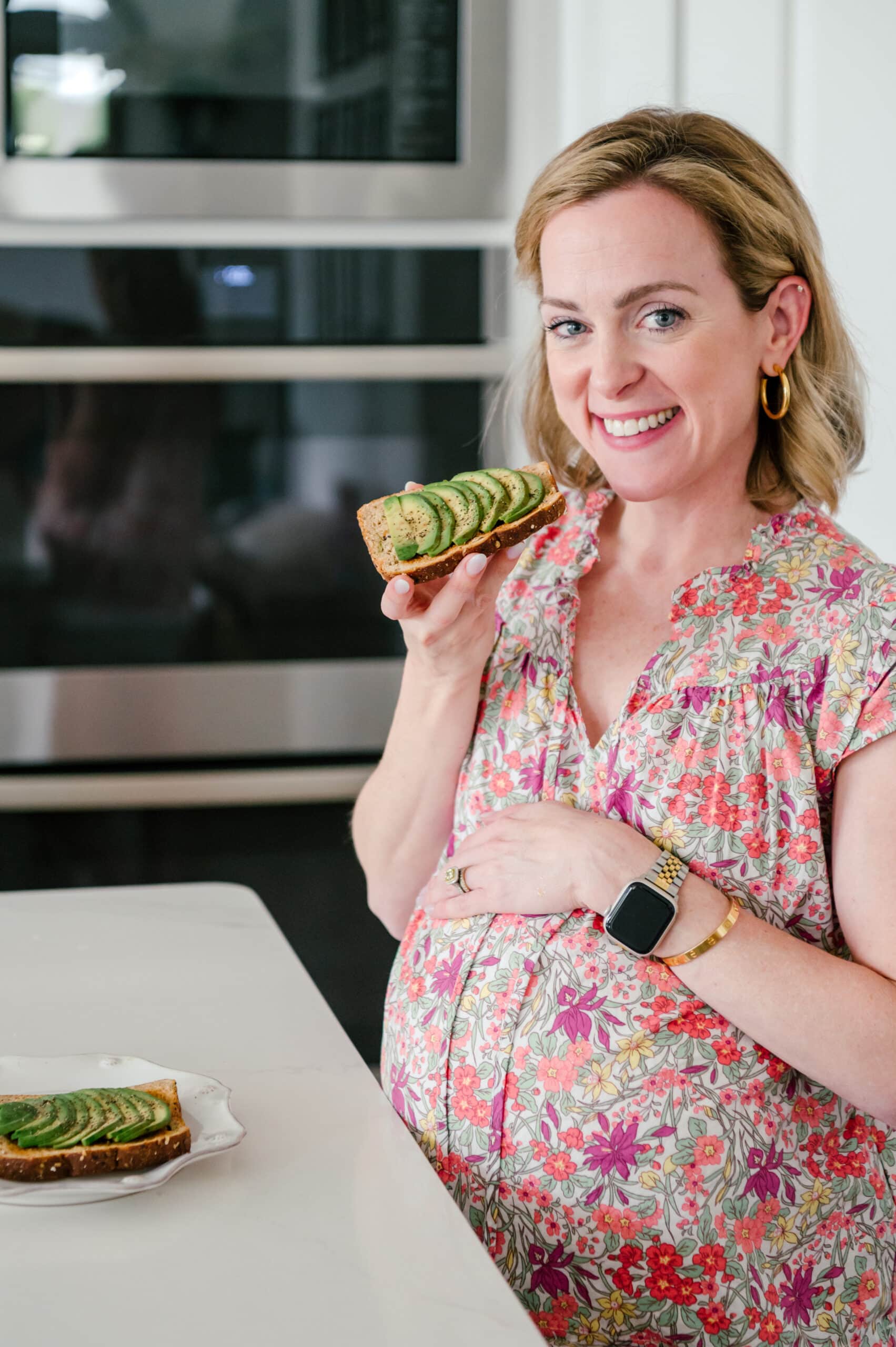
This crucial period sets the tone for when the baby is finally here. The daily goal is to obtain essential nutrients for both mom and baby to thrive through a well-balanced diet, including various fruits and vegetables. For example, a fruit like an avocado contains 250 milligrams of potassium per serving, an essential electrolyte used for regulating blood pressure.2,3 Avocados also contain magnesium (45 milligrams in one whole avocado). This helps maintain normal nerve and muscle function, immune system health, and more.4,5
Avocados are also a source of monounsaturated fats. These “good” fats are important for heart health and cholesterol management and can even support boosting nutrients. The unsaturated fat in avocados can act as an immune system nutrient booster by helping increase the absorption of fat-soluble vitamins A, D, and E. Avocados naturally contain 5 grams of monounsaturated fat and 1 gram of polyunsaturated fat per serving, making them a unique fruit. Other nutrients in avocados that are important for expecting or lactating mothers include choline, folate, and vitamin A. These are all linked to optimal nervous system development and growth in vitro.6
If you’re an expecting mom and planning to breastfeed, avocados can help fuel your supply and composition of breast milk. During lactation, monounsaturated fatty acids (MUFAs), which are found in avocados, are critical to breast milk quality by maintaining proper liquidity.6 In general, we always recommend that breastfeeding moms eat a variety of fruits and vegetables to ensure they’re getting at least 25 grams of fiber per day, per the Recommended Dietary Allowances (RDA). Fiber assists in nutrient absorption, digestion, and fighting constipation.7
Infants
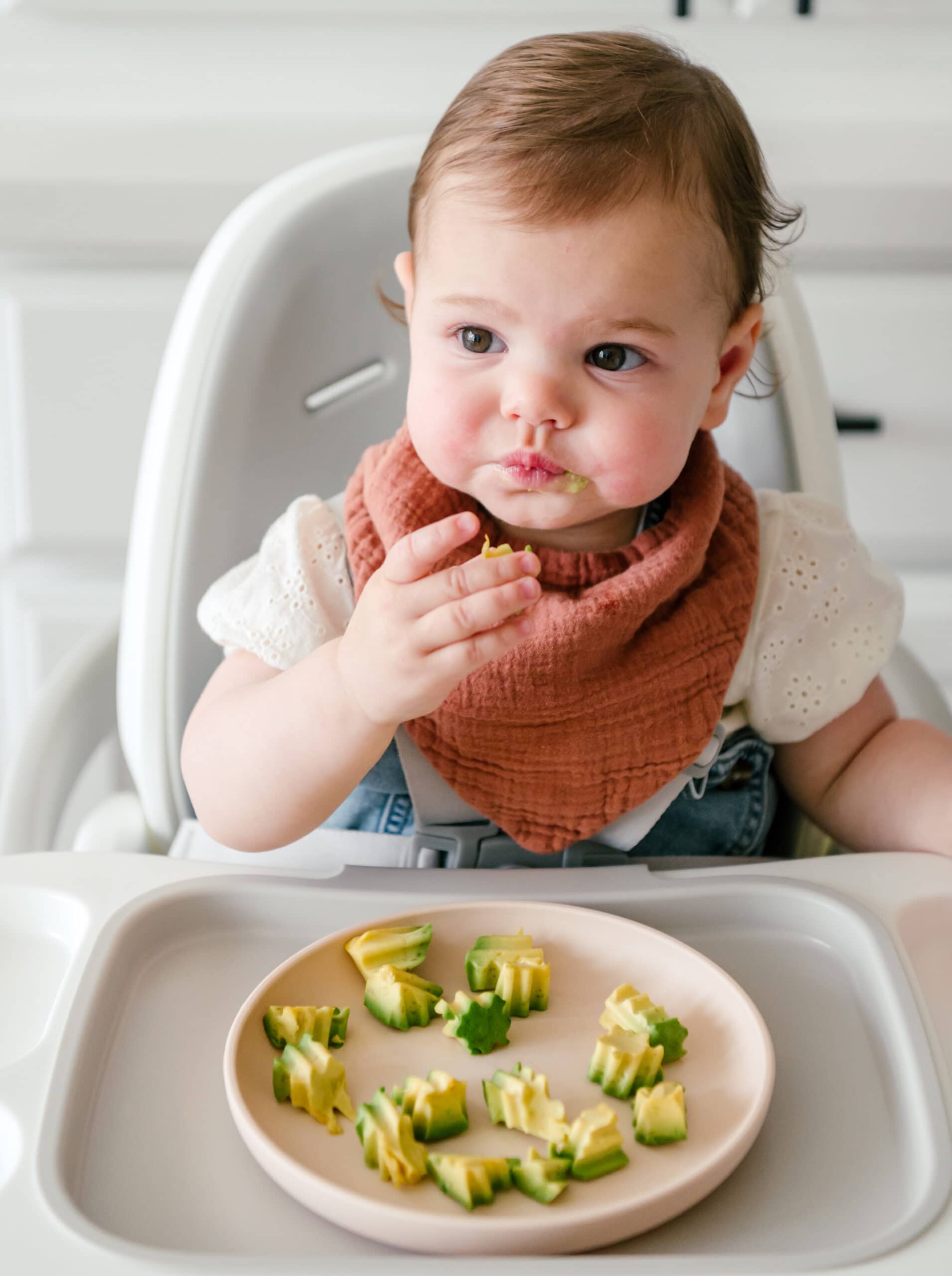
At around 6 months, infants can start to add solid foods to their diet. During this time, it’s important to introduce a variety of foods from different food groups to support nutrition, foster the acceptance of healthy foods, and establish a path toward a healthy eating pattern. Examples of valuable nutrients to include are:8
- Dietary fiber (helps reduce blood cholesterol levels and lower the risk of heart disease)
- Vitamin A (can strengthen infant eyesight)
- Protein (can support healthy growth and development)
Avocados are a great first finger food, especially for baby-led weaning! Their texture and versatility give them top marks as a first food. All you have to do to serve them is cut and peel the skin or create a fun mash-up. Bonus: avocados are a low choking hazard, given their smooth and “mushy” consistency, which eases many moms’ fears. Similar to how avocados benefit mom’s health, they contain good fats, fiber, and essential nutrients that are beneficial to baby’s growth and development during infancy.6
As a first food, avocados are also a great way to introduce your child to eating fruits and vegetables. They’re mild in taste and can be easily spiced up down the road.
Toddlers
By age 2, your child has developed many food preferences and had many exposures to food. By setting your child up during infancy to explore the textures and flavors of fruits and vegetables, avocados will continue to be a nutrient-dense staple in their meals! The Dietary Guidelines for Americans recommend that toddlers eat about 1-2 cups of fruits and vegetables per day. However, young children only eat so much, making it tougher to get enough nutrients in.9 Smaller portions of food mean every bite counts.

Toddlers are the kings and queens of picky eating because they’re beginning to observe their friends’ and peers’ eating habits. Research shows that if we continue to expose young children to fruits and vegetables daily, they’ll eventually touch and try the food. This can support a healthy eating pattern from childhood and on. After about eight to 10 days of exposure to a single food, a child is likely to have increased acceptance of that exposed food.10 Repeated exposure to nutrient-dense foods can be especially helpful with foods like avocados, which children may not see their peers eating for lunch every day.
Check out the recipes listed at the bottom of the article to find kid-friendly meals and snacks that incorporate more fruits and veggies into your child’s diet. Whether in avocado muffins or a dark chocolate avocado mousse dessert, avocado is a great way to add texture and nutrients to a meal without sacrificing flavor or health.
Adolescence
As kids get older and eventually enter young adulthood, they tend to eat less and less fruits and vegetables. According to the Centers for Disease Control and Prevention (CDC), young adults only consume about one serving on average of fruits or vegetables per day. Luckily, there are some approachable ways to get your child to eat more.11
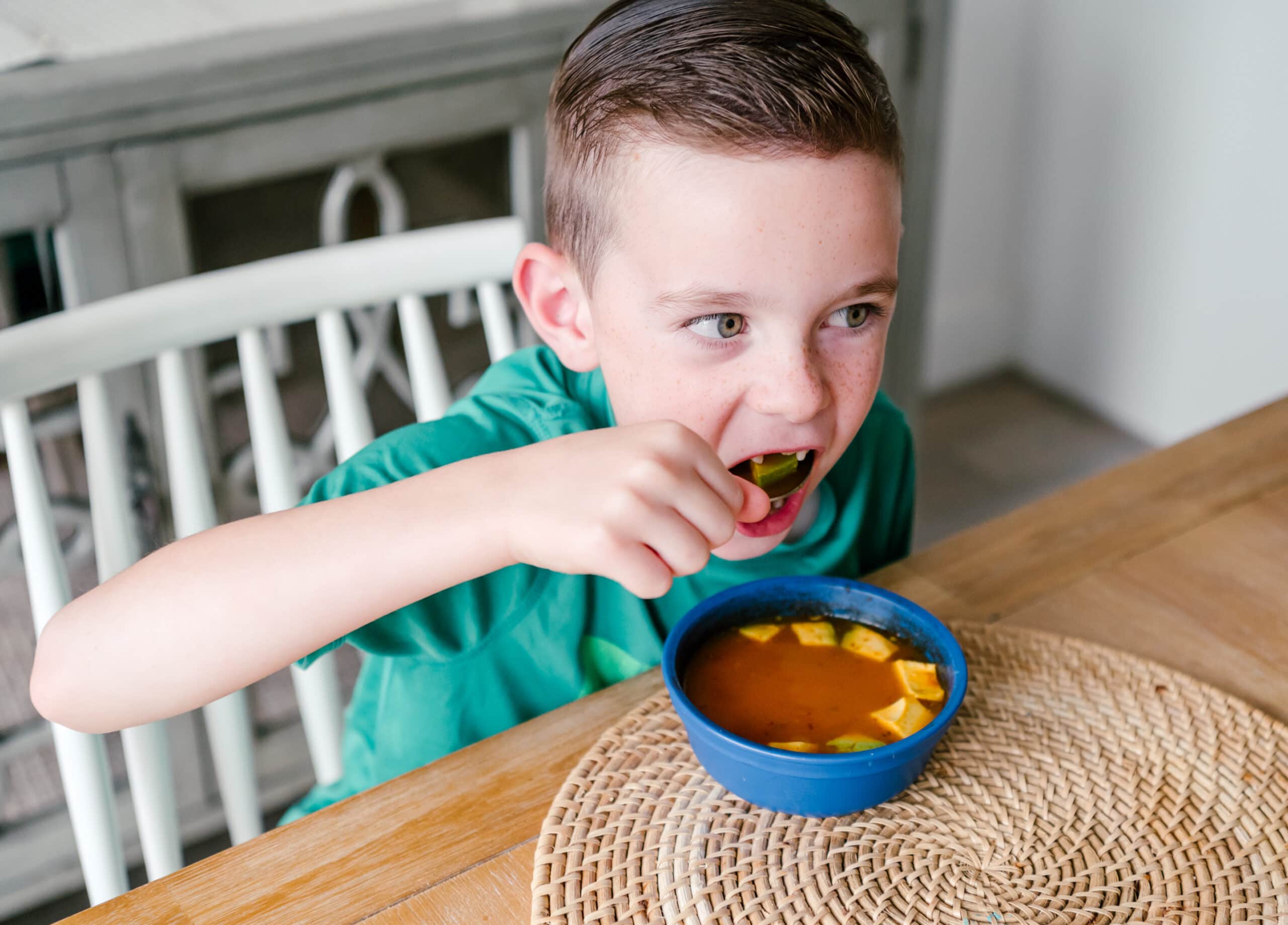
One simple way to incorporate more veggies into your child’s diet is soup. Topping a chicken tortilla soup or chili with avocado is a great way to add texture and nutrients! Another way is with dips, such as fresh guacamole with chips and celery. Pairing vegetables and fruit with common and enjoyed foods can make getting essential nutrients much easier. Avocado provides an extra creamy texture (to smoothies, for instance) and has a long list of health benefits.12 Consider throwing this nutrient-dense fruit into typical meals, including sandwiches and tacos. You could also make them an alternative to your child’s favorite side dish, like these crispy avocado bites instead of fries.
Adults
As we age, there can be an increased risk of a multitude of health concerns, from hormonal changes to a higher risk for cancer. One simple way to keep your health in tiptop shape is by maintaining a healthy diet. Eating more fruits and vegetables every day, like avocado, may help support skin, eye, digestive, bone, and brain health (just to name a few benefits).13
Another motivating factor to include fruits and vegetables in your diet is modeling. Because we learn and observe the behaviors of those around us, we can encourage ourselves, our children, and even the whole family to seek healthy food options and lifestyle behaviors. Modeling is one of the best ways to introduce new foods to your children’s diets — because who wouldn’t want to be just like mom?!14

Modeling healthy habits early on can lead to better health outcomes for your children in the future.14 Examples of modeling include taking your children grocery shopping and letting your kids be involved in making meals. When they learn how to cook or discover where their food comes from, they’re more inclined to try and eat the foods you offer. From guacamole for a get-together to grilled fish tacos topped with avocado slices, there are a multitude of ways to incorporate whole ingredients and fresh produce into the family’s everyday idea of normal and healthy.
Easy Avocado Recipes and Cooking Tips
Whether you’re just now adding avocados to your grocery list or are a life-long lover of avocado toast, it’s essential to know how to prepare them properly for different snacks and meals! If you buy avocados and they’re not ripe yet, the best way to ripen them is to wrap them in a closed paper bag (or a newspaper, if available) with an apple or banana for two to three days, give or take a few depending on the avocado. You can tell if an avocado is ripe by applying gentle pressure to the fruit. The firmer the fruit is, the more time it needs to ripen.
The best way to open an avocado is to grip it in one hand and cut it in half with the other, using a kitchen knife. To do this, cut the avocado down the middle until you hit the pit, then rotate the avocado as you hold the knife in place. Once you’ve cut it in half all the way, twist the two sides of the avocado and pull it apart to open. The pit can be tricky to remove, but a simple way to do this is to use a spoon to scoop it out. Once the pit is out, you can dice the meat of the avocado (without cutting all the way to the skin). Then, scoop out the insides with a spoon.
Here are some of our favorite quick and easy avocado recipes. These recipes are a great way to incorporate avocados into your family’s diet. They’re perfect for kids and adults alike! These delicious and nutritious snacks will make the whole family happy:
1. Avocado Berry Blender Muffins
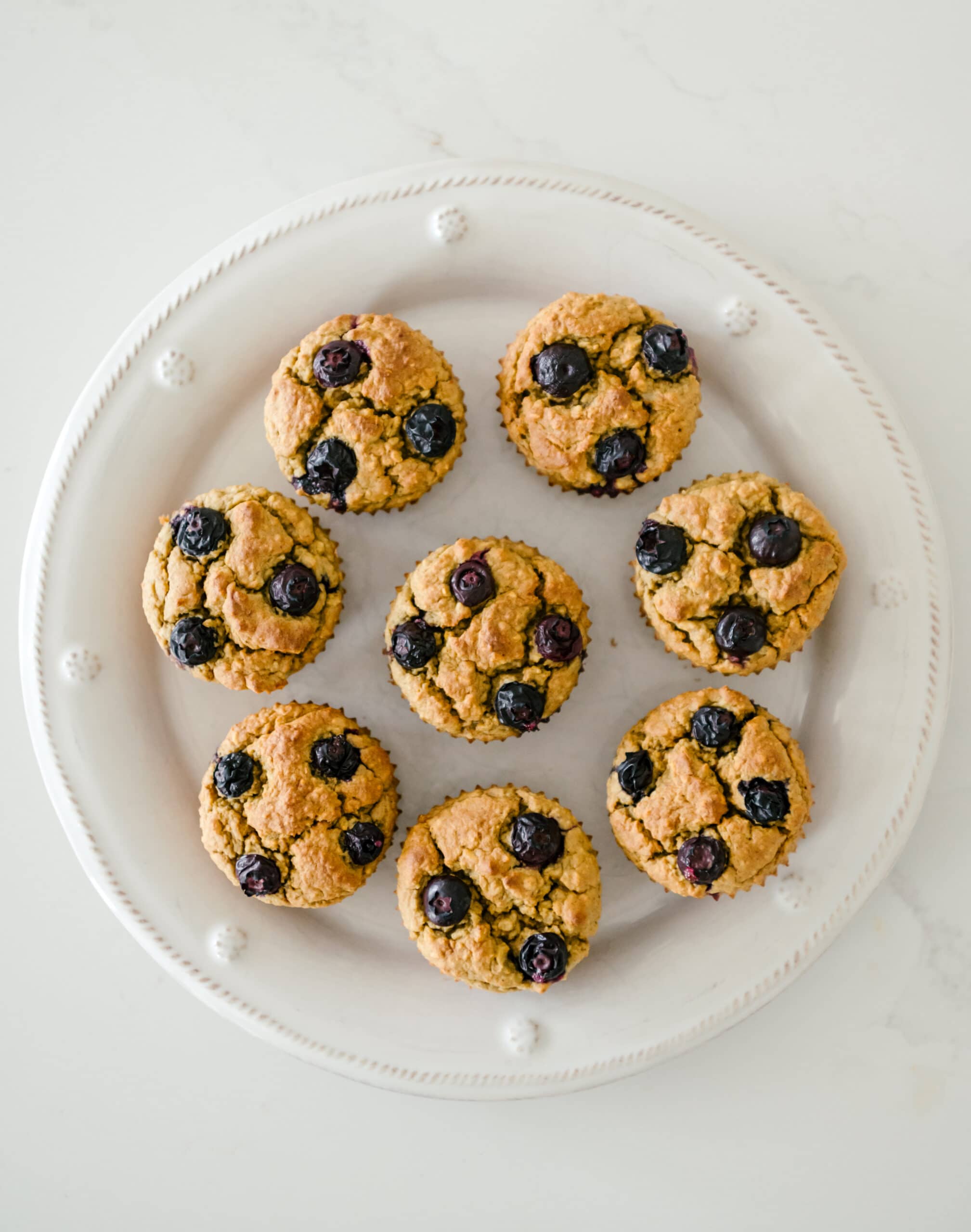
While guacamole might have been your first introduction to avocados, they’re also incredibly versatile fruits that work wonderfully in baking. Thanks to their healthy fat profile, the fruit can easily replace butter or oil in a recipe to add extra nutrients and keep your baked goods moist. Around the age of 1, your little one may be able to start eating baked foods like muffins. All you need is a blender and muffin tin for a whole batch of these fruity and fiber-filled muffins. It’s the perfect grab-and-go breakfast, baked with love and avocado goodness!
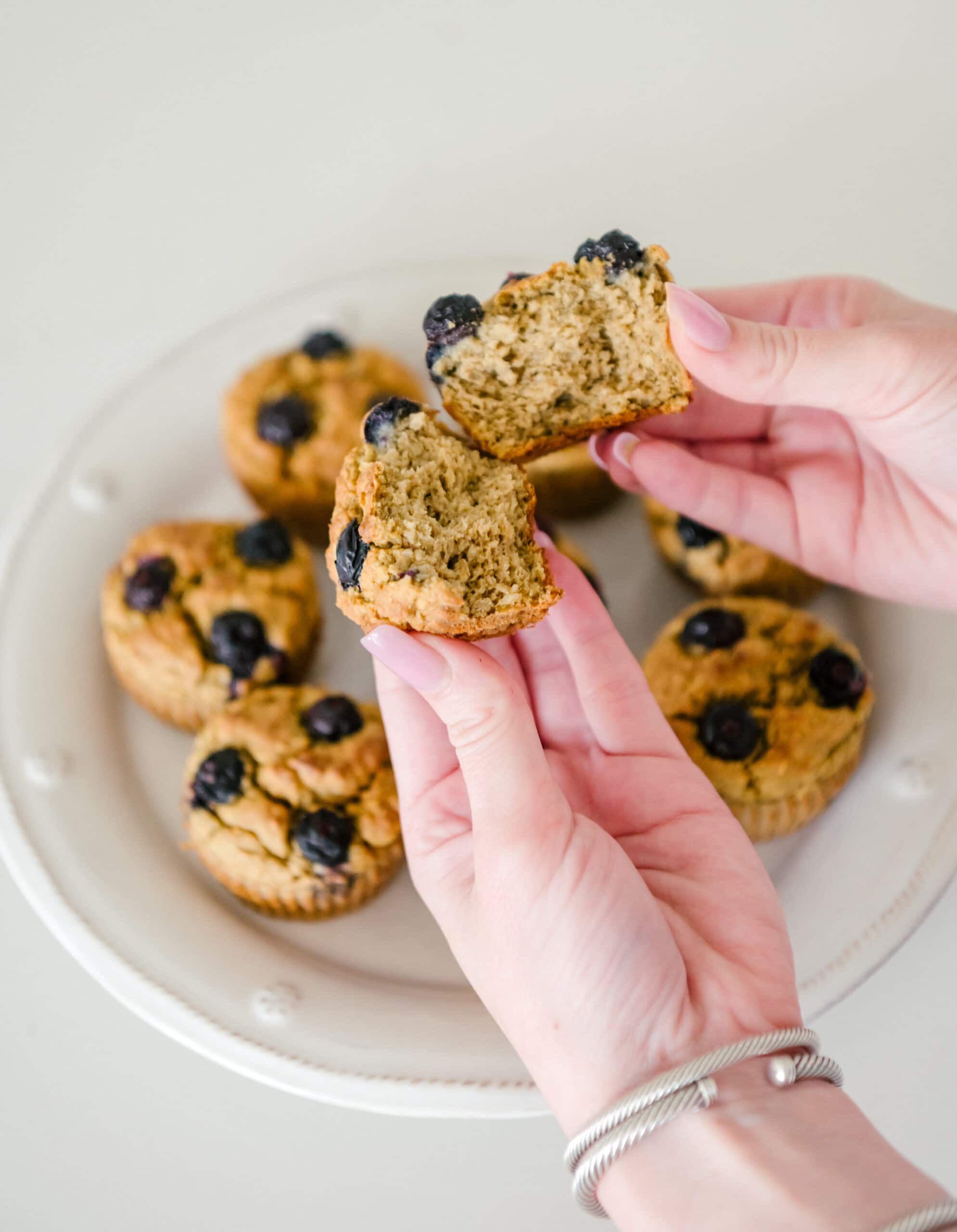
Ingredients:
- 2 cups of rolled oats
- 2 large eggs
- ½ ripe, fresh avocados (halved, pitted, and peeled)
- 1 ripe banana
- ½ cup of applesauce
- ¼ cup of maple syrup
- 1 teaspoon of baking powder
- ½ teaspoon of baking soda
- ¼ teaspoon of salt
- 1 teaspoon of vanilla extract
- 1 cup of blueberries or another berry of choice (fresh or frozen)
Instructions:
- Preheat the oven to 400° F. Spray a 12-cup muffin tin, or line and lightly grease liners.
- Add all ingredients (except the berries) to a blender. Blend until combined, scraping down the sides as needed until the batter is smooth.
- Divide the batter into muffin cups, and top with berries. Bake for 15-18 minutes or until a toothpick inserted comes out clean. Transfer to a cooling rack and let cool completely before serving.
2. Avocado Berry Breakfast Smoothie
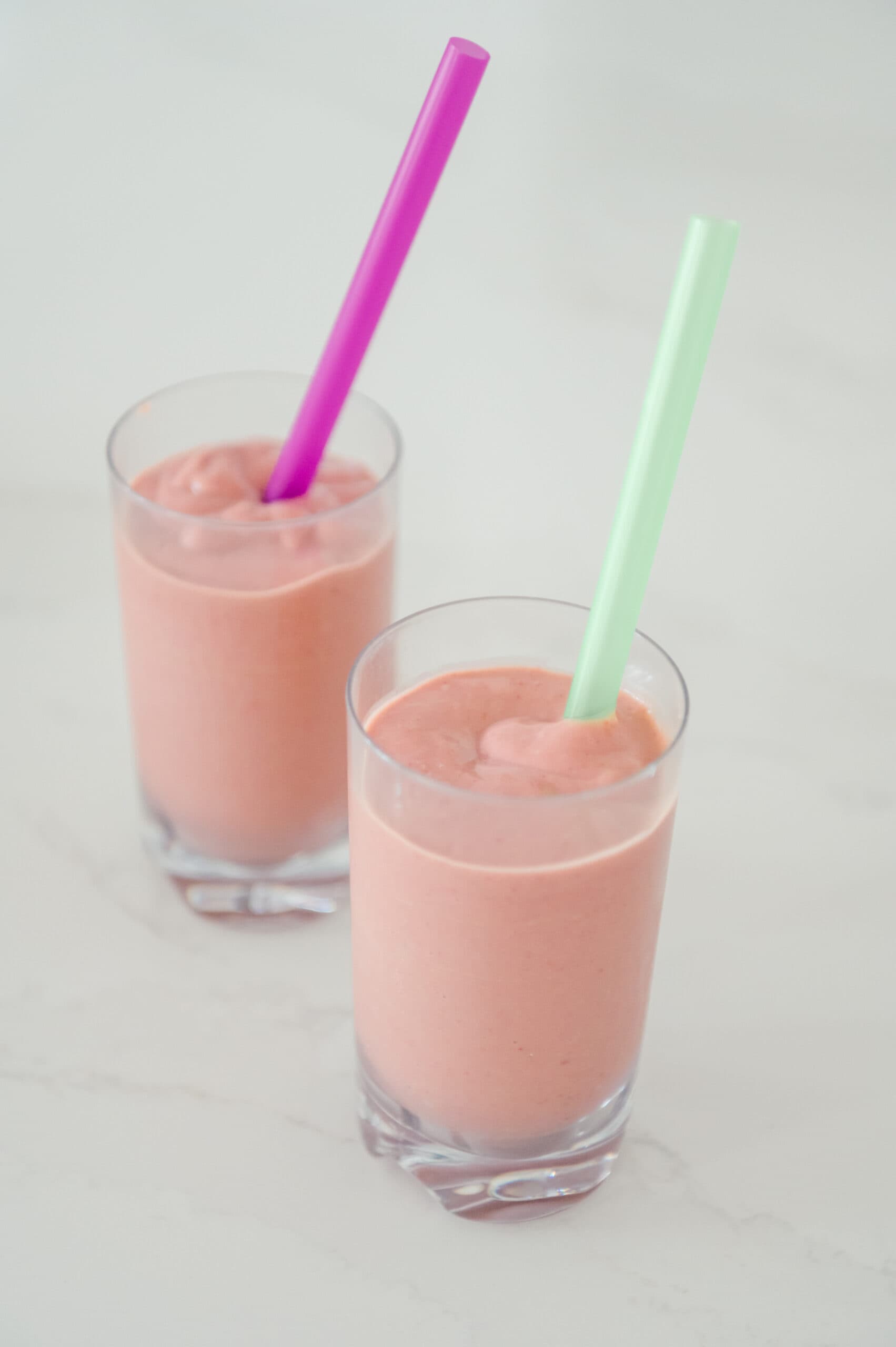
Smoothies are an excellent choice for toddlers who are 15-18 months old.15 This five-minute recipe for an avocado berry smoothie is heart-healthy and dairy-free. Plus, it’s sweet and berry-packed (avocados are technically a berry!) without any added sugars.
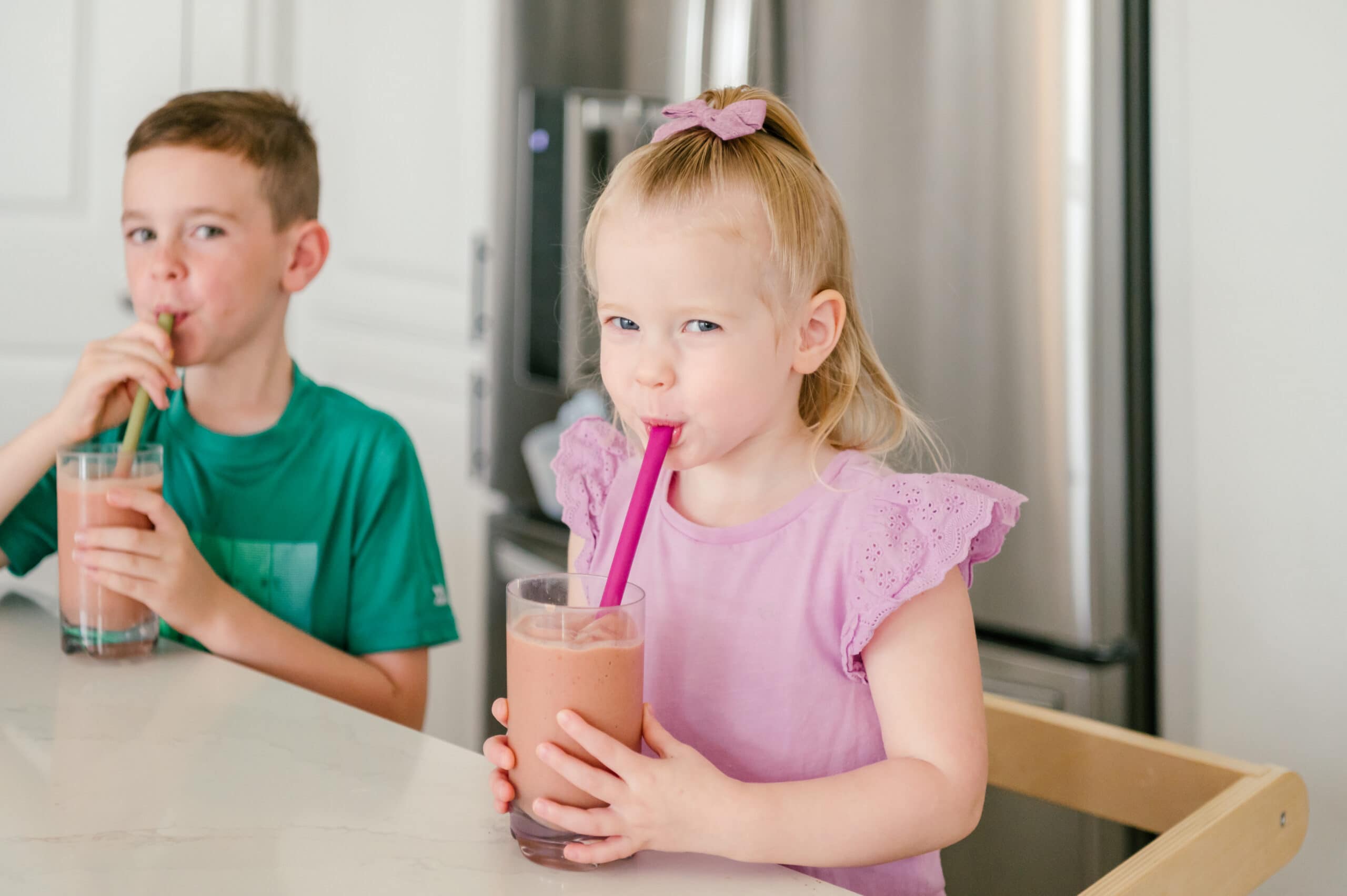
Ingredients:
- 1 ripe, fresh avocado (halved, pitted, and peeled)
- 1 (10 oz) package of frozen raspberries (fruit only, no added sugar)
- 1 ½ cups orange juice
- 1 cup of ice cubes
Instructions:
- Place all ingredients in a blender, cover, and blend on high until the mixture is smooth.
- Pour into glasses and enjoy!
3. Berry Delicious Avocado Snacks
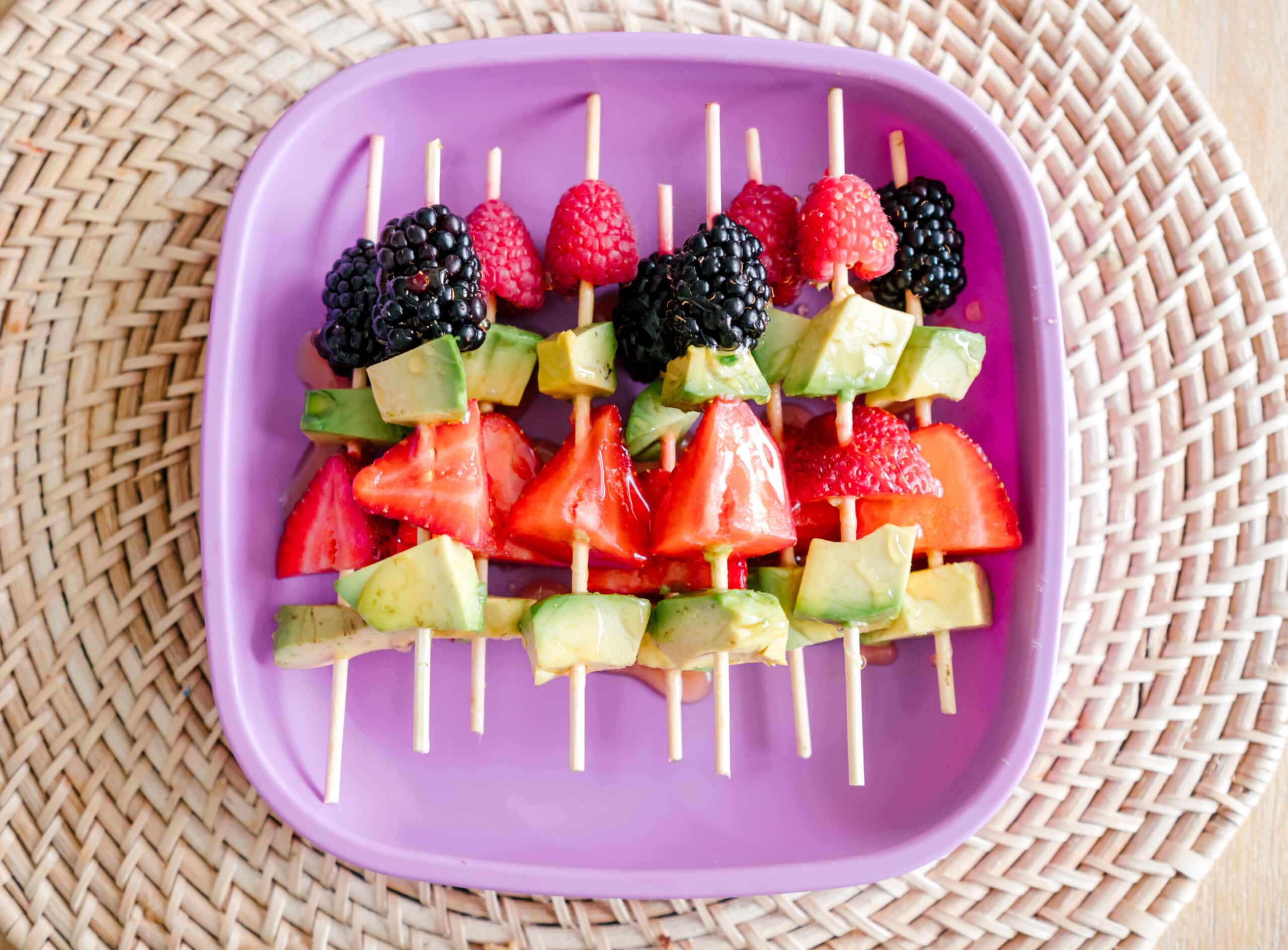
These quick avocado snacks are easy to share with older kids. They’re a delicious way to boost fruit intake!

Ingredients:
- 1 ripe, fresh avocado (halved, pitted, peeled, and cut into 24 bite-sized pieces)
- 6 fresh strawberries (cut in halves)
- 12 blackberries or raspberries
- 2 tablespoons of honey
- 12 wooden skewers (4-inch size)
Instructions:
- Stack each skewer with two pieces of avocado, one piece of strawberry, and one blackberry or raspberry.
- Drizzle the skewer with honey and serve!
Your food choices can serve as an investment in your and your child’s future. As adults, when we continue to choose fruits and vegetables for ourselves and our growing children, we can actively model healthy eating behaviors and increase their exposure by introducing these foods at various life stages. It can be as simple as starting with avocado as your baby’s first finger food or adding avocado to your daily post-workout smoothie. All we have to do is commit to planning for a better, healthier future!


